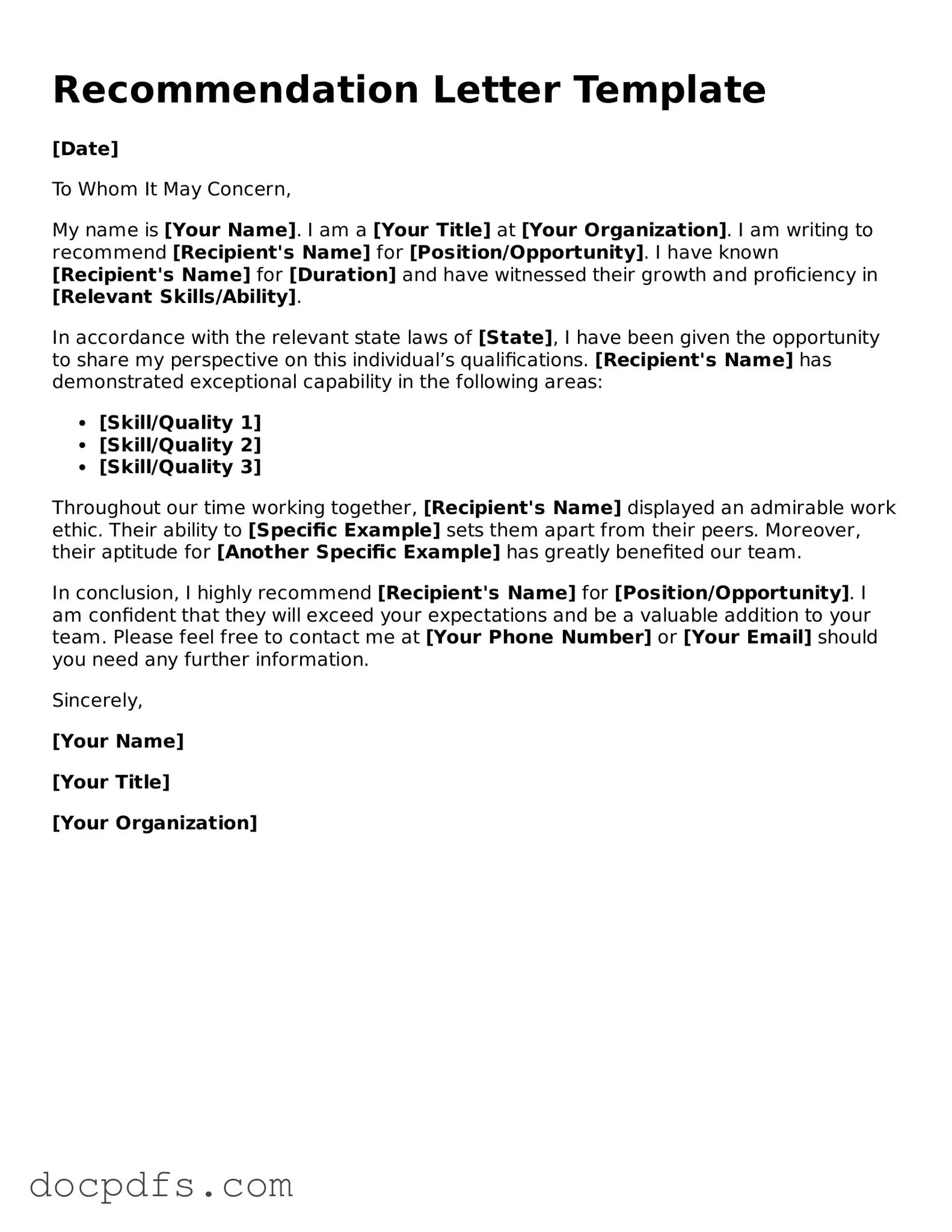Legal Recommendation Letter Document
A Recommendation Letter form is a document used to request and provide endorsements for individuals seeking opportunities such as jobs, educational programs, or scholarships. This form typically outlines the candidate's qualifications, skills, and character as perceived by the recommender. Understanding how to effectively use this form can significantly impact the applicant's chances of success.
Open Recommendation Letter Editor Now
